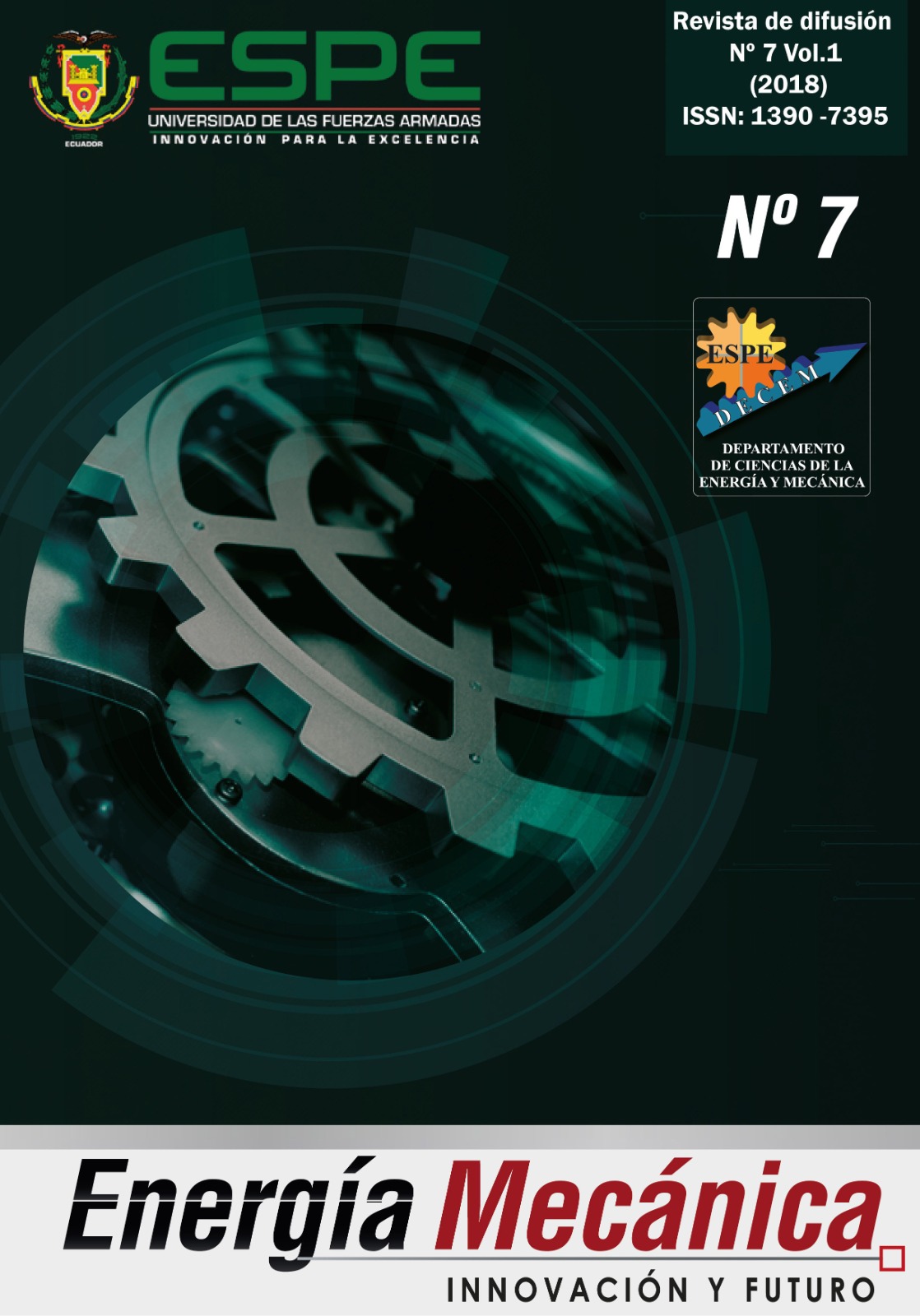EVALUACIÓN DEL MULTIPLE DE ESCAPE PARA EL MOTOR G13B SUZUKI.METODOLOGÍA DIGITAL Y EXPERIMENTAL.
DOI:
https://doi.org/10.24133/EMIF.V7.14i.3935Abstract
Resumen La presente investigación tiene como objetivo
diseñar el múltiple de escape para un vehículo
Suzuki con motor G13B Twin Cam, mediante el uso
del software de código libre 1D OpenWAM, para
la obtención de las dimensiones y configuración
de mayor potencia máxima. Se fabrica el múltiple
de escape por dos métodos, denominados A
(doblado de tubos con aplastamiento en la zona
de curvatura) y B (unión de tubos predoblados
de sección constante), a fin de observar el efecto
del proceso de construcción en el desempeño del
motor. Se logra un incremento de potencia máxima
de 8 % y 10 % para el tipo A y B, respectivamente.
Finalmente se corrobora los resultados de
simulaciones con pruebas experimentales en
un dinamómetro, encontrando una diferencia
promedio menor al 8 %, con gran semejanza en la
silueta de las curvas características, lo cual asegura
el proceso computacional, reduciéndose el costo y
tiempo de diseño y experimentación.
Palabras clave: Simulación 1D, OpenWAM, múltiple de escape,
torque y potencia del motor.
Abstract The present research aims to design the exhaust
manifold for a Suzuki vehicle with G13B Twin
Cam engine, by using the free code 1D OpenWAM
software, in order to obtain the dimensions and
configuration of power maximum. The exhaust
manifold is manufactured by two methods, known
as A (bending of tubes with flattening in the
curvature zone) and B (joining of pre-bent tubes
of constant section), in order to observe the effect
of the construction process on the performance of
the motor. It achieves a maximum power increase
of 8% and 10% for type A and B, respectively.
Finally, the confirm the results of simulations
with experimental tests in a dynamometer, finding
an average difference less than 8%, with great
similarity in the silhouette of the characteristic
curves, which ensures the computational
process, reducing the cost and time of design and
experimentation
Keywords: 1D simulation, OpenWAM, exhaust manifold,
engine torque and power.
REFERENCIAS[1] Blair, G., Mackey, D., Ashe, M., y Chatfield,
G. (2001). Exhaust tuning on a four-stroke
engine; experimentation and simulation.
SAE Technical Paper, 2001-01-1797.
doi:10.4271/2001-01-1797
[2] Mackey, D., Crandall, J., Charfield, G., y Ashe, M. (2002). Optimization of exhaust-pipe
tuning on a 4-stroke engine using simulation.
SAE Technical Paper,2002-01-0002.
doi:10.4271/2002-01-0002.
[3] CMT-Motores Térmicos. (2017). OpenWAM.
Valencia, España: Universidad Politécnica de
Valencia. Didapatkan dari http://www.cmt.
upv.es/OpenWam01.aspx.
[4] Galindo, J., Tiseira, A., Fajardo, P., y Navarro,
R. (2011). Coupling methodology of 1D
finite difference and 3D finite volumen CFD
codes based on the Method of Characteristics.
Mathematical and Computer Modelling. 54,
1738-1746. doi:10.1016/j.mcm.2010.11.078.
[5] Bermúdez, V., y Tormos, B. (2011). Pérdidas
mecánicas. Dalam F. Payri, y J. M. Desantes
(Ed.), Motores de combustión interna
alternativos (hlm. 152-172). Barcelona,
España: Editorial Reverté.
[6] Massimo, M. (2010). Measurement of the
effect on brake performance of the intake and
exhaust system components in a motorbike
high speed Racing engine. Applied Acoustics,
71, 1-10. doi:10.1016/j.apacoust.2009.07.01.
[7] Kanawade, N., & Siras, O. (2015). Design,
analysis and development of 4-cylinder
IC engine exhaust manifold. International
Engineering Research Journal, 472-478. [8] Galindo, J., y Hernández, J. (2011). Modelado
de motores. Dalam F. Payri, y J. M. Desantes
(Ed.), Motores de combustión interna
alternativos (hlm. 746-796). Barcelona,
España: Editorial Reverté.
[9] Instituto Ecuatoriano de Normalización.
(1984). Determinación de la potencia neta
del motor. NTE INEN 960:1984, Vehículos
automotores.
[10] Mohiuddin, A., Rahamn, A., & Dzaidin, M.
(2007). Optimal design of automobile exhaust
system using GT-Power. International Journal
of Mechanical and Materials Engineering,
2(1), 40-47.
Downloads
Published
Issue
Section
License
Los autores que publican en esta revista están de acuerdo con los siguientes términos:
Los autores conservan los derechos de autor y garantizan a la revista el derecho de ser la primera publicación del trabajo al igual que licenciado bajo una Creative Commons Attribution License que permite a otros compartir el trabajo con un reconocimiento de la autoría del trabajo y la publicación inicial en esta revista.
Los autores pueden establecer por separado acuerdos adicionales para la distribución no exclusiva de la versión de la obra publicada en la revista (por ejemplo, situarlo en un repositorio institucional o publicarlo en un libro), con un reconocimiento de su publicación inicial en esta revista.
Se permite y se anima a los autores a difundir sus trabajos electrónicamente (por ejemplo, en repositorios institucionales o en su propio sitio web) antes y durante el proceso de envío, ya que puede dar lugar a intercambios productivos, así como a una citación más temprana y mayor de los trabajos publicados.

